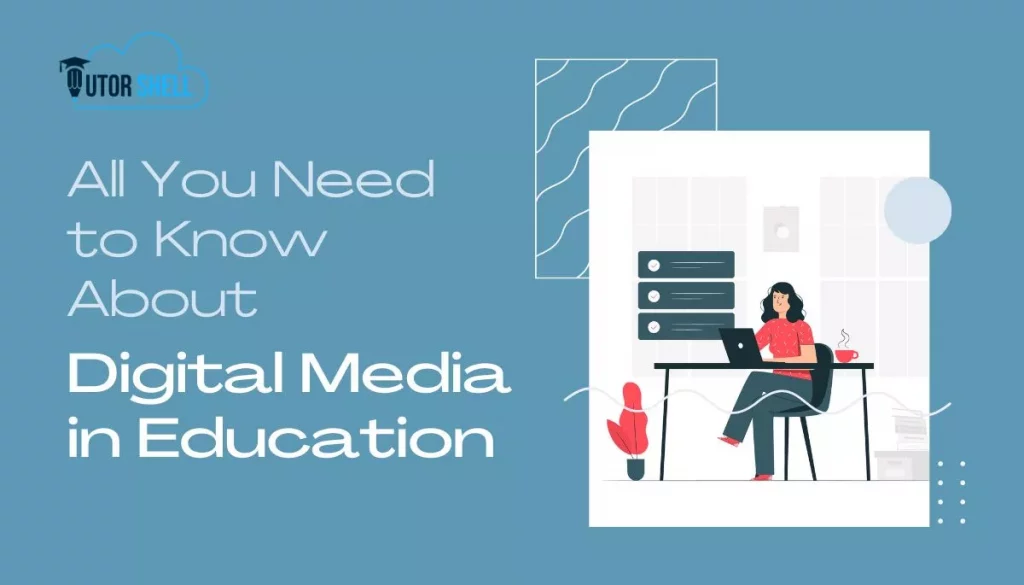The benefits of digital media are massive when it comes to teachers. With the help of online tools, teachers now control their resources. Online teaching software has given rise to innovation, critical thinking, and collaboration. Learning is no longer limited to the classroom and printed paper.
How Digital Media is Used in Education
Teachers found it extremely laborious when there was no digital transformation in education. They had to go through physical books and limited resources to find certain information, which was extremely time-consuming.
In addition, there was no remote online tutoring before the digital age. The teachers had to be present each physical day to teach a class. There was no time flexibility, and they had to commute long hours to reach their specific destination.
With the introduction of digital media; Apps, Smart Tablets, Whiteboards, E-books, and Software were introduced where teachers could teach, share and provide feedback to students from any location of their choice and teach according to their convenience.
Examples of Digital Media in Education
There are three most crucial examples of digital media in education. To begin with, the first is online tutoring software. The next on the list would be video-sharing software, and lastly, there are eBooks.
With the introduction of online tutoring software like TutorShell, there are several benefits that are associated with it:
1. Students can now have an improved learning experience, a higher level of thinking could be encouraged, and students get control over their learning process. In addition, geographical limitations are eliminated, and students and teachers can work on any subject at any time.
2.YouTube is the undisputed king when it comes to video sharing. When a video is shared with a student, it helps them learn complex concepts which look extremely boring on the printed paper. YouTube can be accessed on any digital device, which ultimately improves a student’s learning ability and listening skills.
3. Ebooks can be shared by teachers instantly since they don’t require a physical medium to be traveled. They are portable and can be downloaded. The students can use them to study later or browse through the learning materials while traveling or doing other outdoor activities.
Also, you can change the text format and light settings on eBooks, which means you can increase or decrease the text format or dim the light settings, which won’t stress your eyes.
How Has Digital Media Influenced (or Changed) The Field of Education
Earlier, teachers were the only source of education. Whatever the teacher said was believed as true and not questioned. With the coming of digital media, students can’t do fact-checking on their own.
They can inquire the teacher about a subject and its creditability when they receive information that doesn’t sit right. This fact-checking ability from digital media has transformed teachers from “only source of information” to “guide on the side.”
Benefits and Implications of Digital Media in Education
1. Ease of Communication
Students no longer need to be present in the physical classroom to hear the announcement of upcoming exams, class schedules, and modifications in study materials. With the help of digital media, the teacher and students can communicate whenever they wish to.
2. Saves Money
Educational institutions spend thousands on printed paper for sharing study materials. They are not environmentally friendly and use a lot of resources. Switching to digital media eliminates all these.
The syllabus, study materials, and exam dates can now be found online and can be used year after year. Also, electricity and infrastructure are saved when you switch to digital teaching.
3. No Depression in Students
In physical classrooms, marks are announced in front of everybody, and students are given feedback in front of everyone; this may not be suitable for all students who have scored bad grades.
The criticism in front of everybody can affect mental health. Switching to online media would help teachers to grade every student in private and send personal notes on how to make improvements.
Disadvantages of Digital Media in Education
1. Using digital marketing techniques, some websites provide misguiding information. Just to rank better in search engines, there is so much information that is not backed up by any facts. Students come across these websites and become victims of false news.
2. With the continuous notification of online shopping sales, personal WhatsApp chat, or new movie trailer updates on youtube, students have a hard time focusing on their study materials and scoring good grades in exams. Social media has become addictive.
3. Students don’t focus on learning a skill; instead, they use software to make it work for them. For instance, there is Grammarly which automatically corrects your grammar and spelling, so students don’t learn vocabulary and grammar in real.
In addition, some tools solve mathematical equations, which drives them away from learning maths and understanding the concept of solving an equation
Takeaway
- Digital media has positive and negative sides; it’s up to you which side you are on.
- Online tutoring tool like TutorShell has helped several students and teachers with seamless communication, productivity, and work efficiency.
